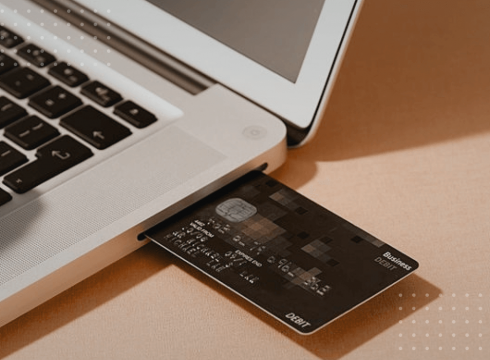A Look into the Future: What Will Financial Services Look Like in Five Years?

Banks used to be the first thing to come to mind when we thought about the term “financial services.” Today, however, we live in a world where we come across a new financial service emerging for another specific need, whether it is a simple online payment or something far more complicated. When we add the vast population that the banks can’t maintain to reach, things become more intriguing in the world of financial services that are powered by financial technologies.
Thanks to FinTech companies and telcos, the unbanked and the underbanked are managing to adapt to a digital world where cash loses its physical form day by day. Yes, banks used to be the only option and everything else was a niche alternative, but the image that comes to mind when we think about a bank has already changed, and soon, the conventional banking systems as we know them will become the minority in the world of digitalisation. That’s why banks are adapting to the new digital age even quicker than newcomers. In this article, we are going to share some predictions for the financial industry over the next five years.
- The Big Challenge is Finally Getting Solved: Banking the Unbanked
- The Digital World Keeps Up with The Quick Pace Of Today’s Financial Needs
- A New Era for Loans & Insurance
- Personalisation is Getting More and More Important
- The New Banks of the Post-Open Banking Era
- Good News: Everyone Can Build a Bank!
The Big Challenge is Finally Getting Solved: Banking the Unbanked
One of the biggest problems in world development is the unbanked population—well, at least in the finance industry, it is. WorldBank states that 1.7 billion adults remain unbanked globally. Frankly, for the unbanked, becoming a bank customer is not a priority. They just need to get into the e-money ecosystem. Looking at the chart below, you can see that the underbanked population has already found a solution, and this answer seems to be new-age mobile technologies.
Although banks are working hard to reach more people, 1.7 billion is still a tremendous number. Since banks are having such a challenging time reaching the unbanked, new-age financial services come into the picture: FinTech companies, telcos, and their comparably convenient financial solutions. If you want to learn more about the surprising development and rise of telcos in the finance industry, you can read our article on emerging technologies in financial services. In short, telcos and FinTech startups are banking the unbanked which eventually works for everyone; banks, consumers, and shareholders.
The Digital World Keeps Up with The Quick Pace Of Today’s Financial Needs
That consumers of today need to do everything quickly remains one of the biggest challenges for the banking industry. Although banks are creating new solutions for the needs of the younger generation who are used to “on-demand,” new technologies like P2P lending, which eliminates banks from the process, are being used more and more every day and the giants of the industry are aware of this. Trillion-dollar companies like Facebook, Amazon, and Google are investing in the new-age financial platforms like Venmo, PayPal, and Square instead of decades-old traditional banks.
Still, the two systems, both conventional and new age, are supporting each other in the next chapter for money. It is clear that we will greet the first fully cashless societies soon and, interestingly, the new system reliant on electronic money will be more accountable, transparent, and secure than the old one. According to Capgemini’s research on open banking, 10 to 15 new third-party providers get PSD2 licenses every month, shaping the next age of financial services.
Adapting to the Needs of Gen Z
The biggest topic in almost every industry for a couple of years is Generation Z. After underestimating millennials and paying the consequences, all the industry leaders are playing a different game this time. But again, unlike the millennials, Generation Z is incredibly unpredictable in their quick minds and behaviours. Still, if we know one thing about Gen Z it is that they want things easy, fast, and affordable. When you think about the complicated process of signing up as a bank customer, it is not Gen Z’s, or even the millennials’ cup of tea. The “do it for me” approach of the new generations is the leading motivation for start-ups like new-age financial solutions such as Venmo, Credit Karma, Mint, and Acorns. The FinTech businesses are aware of the fact that the young generation isn’t searching for a bank to save up their funds or apply for big loans. Instead, they want to perform quick transactions with what they already have and they don’t want to wait in lines to achieve that goal.
A New Era for Loans & Insurance
With third-party service providers joining the financial scene, the roles of the conventional players like banks and insurance companies have become more solidified. Today, a regular person doesn’t need a bank to make payments or transactions; a mobile payment tool is more than enough. But when it comes to credits and loaning, banks, whether branchless or conventional, are still the ones to go. But there’s a difference; there are fintechs now to help streamline the credits & loans for both parties.
Third-party providers build a bridge between creditors and borrowers with their new-age data analysis technologies. Thanks to fintech firms that focus on user data, it’s now easier than ever to apply for a loan, showing the financial history based on real data and analysis.
On top of that, neobanks are becoming the loaners of the new age themselves. Credit Karma, C2FO, AVANT, and Affirm are the first ones to come to mind when we think about fintechs and neobanks in the lending and leasing area. Yes, some may offer loans with higher interest rates than banks, but they’re faster and more convenient for smaller loans. The best part is, building a fully digital financial service can take months with the right partners, and we’re happy to help with our made-to-fit future-ready fintech solutions platform.
Personalisation is Getting More and More Important
Customers are at the heart of every company’s vision and strategy. Their needs and experience should be taken into account when designing products, services, and interactions.
Today, customer-centricity in finance is a key factor for success. According to Business Insider, 60% of customers are willing to share personal and even mobile data with financial providers to get a better service. Fintechs have been successful in this area by focusing on their customers’ needs. They have simplified processes for customers to make their lives easier and more convenient. Banks are also starting to adapt to this trend by providing a better customer experience than before.
The Differentiating Factor: User Experience
There’s no doubt that the future of banking is about user experience. Today, banks are not just about numbers anymore; they have to be customer-oriented too, and user data is a lifesaver to create a better user experience for banks.
On the other hand, there are proven user experience methods to consider while designing a financial experience for customers. As a platform provider that’s been leveraging valuable insights for years, we can safely say that the Tmob Future-Ready Fintech Solutions Platform is set to bring your customer experience steps ahead. And if you need it, our UX team, Shape, is always ready to enhance the experience that fits your target user in the best way possible.
The New Banks of the Post-Open Banking Era
The PSD2 directive has been in place for more than two years now and it has already had a significant impact on the banking industry. The directive is designed to make the banking industry more transparent and secure by allowing customers to decide with whom they share their data. With new parties joining the financial infrastructure, the landscape of how banks work is about to change for the better.
Financial Security in the Open Banking Era
Security used to be the number one concern for people when deciding where to put their money but, today, through immense advancements in technology like blockchain and mobile payment, everything is under control and secure. The next phase for banking, widely known as open banking, is a step forward for many aspects of the industry, and security is one of them. With the latest security and transparency measures taken by Europe, there are now more parties in the account tracking game, which creates a more transparent and secure experience for users. In the end, it would be safe to say that the digital age of money seems to be more secure than even highly guarded bank safes.
Digitalisation Has a Great Effect on Transaction Costs
Although the end-user doesn’t notice this part of it, operating a business on a traditional banking system has huge transaction costs compared to digital solutions. Even for the end-user, most credit cards have subscription fees and making a simple cash transfer still costs money. On the digital front, the case is nearly the opposite and the reason is very clear: digital systems don’t need as much funding to operate. For a couple of years now, we have been seeing credit cards or bank accounts that offer less for almost free and that’s the only part of the developments that the industry is undergoing.
Good News: Everyone Can Build a Bank!
Building a bank from scratch is extremely challenging and, considering the needs of the modern individual, it’s comparably unnecessary. When we look at recent trends in banking, we see new “branchless banking” start-ups. The best part is, the gap between a brick-and-mortar bank and a simple fintech company is getting broader, creating a space for new financial solution models like e-commerce loyalty wallets, neobanks, or super fintech apps. Our client, ViveBank, is a great example of the new-age branchless banking system, and there are more and more options relying on e-money which seems to dictate the future of financial services.
Thanks to our custom-made tools and platforms focusing on e-money, mobile financial solutions, and e-wallet systems, it is now easier and more affordable than ever to build a business that works through e-money. With our Mobile Financial Solutions and Future-Ready Fintech Solutions platforms, you can have whatever your business needs and the best part is that you don’t have to wait for months: it’s all ready to be customised considering the demands of your business model. To learn more about our customisable platforms, you can visit our product pages.
- The Big Challenge is Finally Getting Solved: Banking the Unbanked
- The Digital World Keeps Up with The Quick Pace Of Today’s Financial Needs
- A New Era for Loans & Insurance
- Personalisation is Getting More and More Important
- The New Banks of the Post-Open Banking Era
- Good News: Everyone Can Build a Bank!




